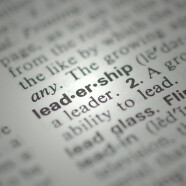
Underlying the definitions of leadership is a sense of movement – movement along an established course, or movement on a new or changing course. A leader plays five vital roles in directing this movement, particularly when the movement is in response to a new leadership initiative. The five vital roles of a leader are:
Initiating the movement,
Pointing the direction of the movement,
Acting as a guide for the movement
Influencing the followers and their movement, and
Providing reassurance
Each of these roles is discussed below.
Initiating Movement
Leaders frequently play a key role in initiating the movement of followers toward some goal, usually a goal supported by the leader. A leader may initiate or sustain continuing movement toward a goal by:
Commanding, such as commanding an army;
Directing from a position of authority;
Negotiating by trading a benefit for an action;
Persuading through a logical appeal; or
Inspiring, as from a new vision or concept.
Regardless of the manner employed, a leader causes followers to change position – physically, behaviorally, emotionally, intellectually, socially, or politically.
Pointing the Direction
Once the movement begins, a leader provides continuous direction to the movement. The focus of the direction may be to direct followers to continue along an established course; to move toward a desired objective; or to enter new, uncharted ground in pursuit of a leader’s vision. A leader has a view of the ending outcome or objective and points the group members in the direction of that desired outcome or objective.
According to Kouzes and Posner in their book The Leadership Challenge, “Leaders can be said to be those who ‘go first.’ They are those who step out to show others the direction in which to head. They begin the quest for a new order.”



